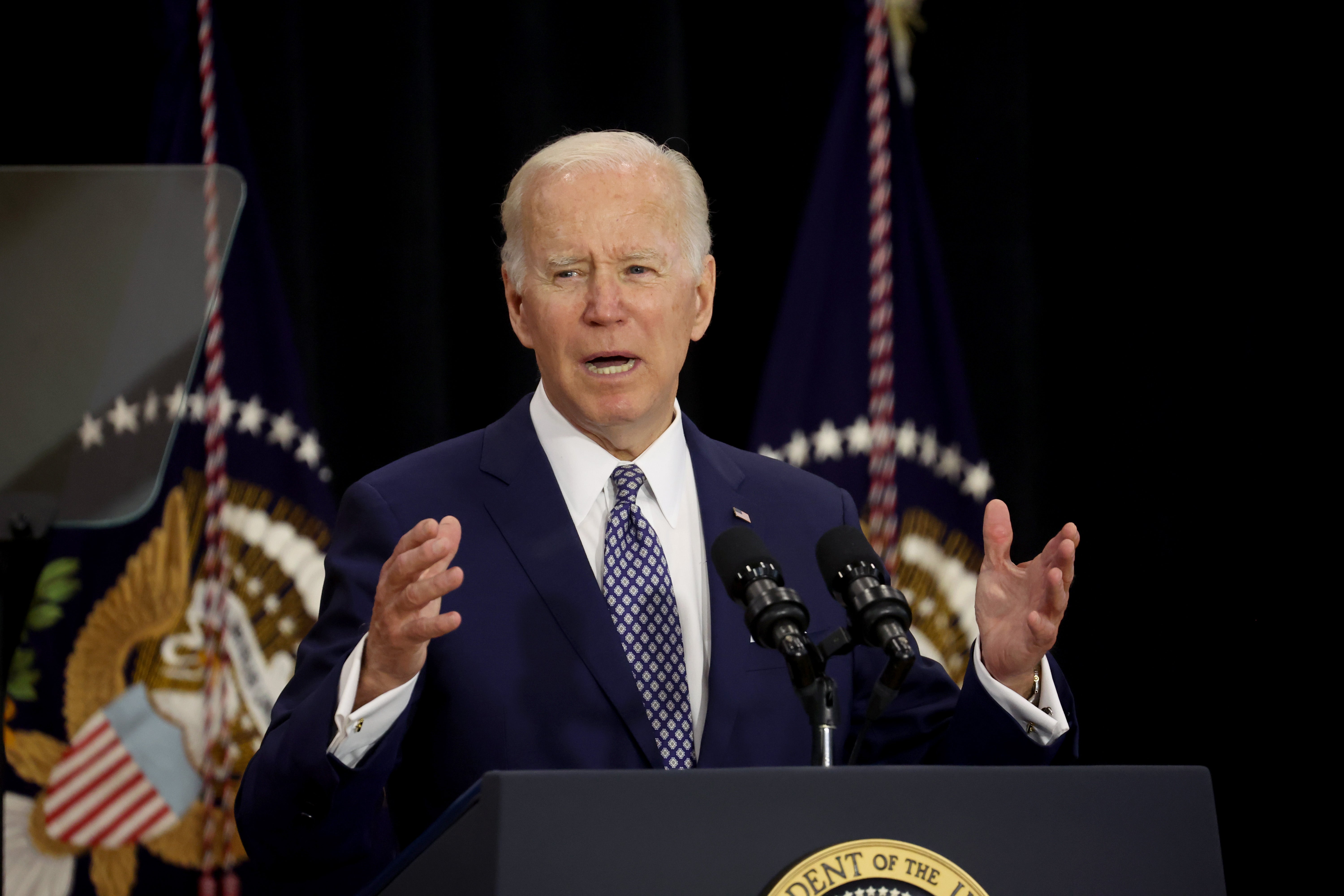
Americans are in the midst of a major gun-buying boom as production has increased nearly threefold over the past two decades with a substantial uptick in the last three years alone, stark new data shows.
The National Firearms in Commerce and Trafficking Assessment (NFCTA), published Tuesday with the Bureau of Alcohol, Tobacco, Firearms and Explosives (ATF), is the first comprehensive study of criminal gun trafficking in over two decades, Attorney General Merrick Garland wrote in the study’s release.
And, he added, it will provide “critical, data-driven insights on firearms commerce and technology trends that will inform our efforts to understand and disrupt gun trafficking networks”.
The release of the report reflects an industry that has very clearly responded to national demand, as annual domestic gun production has gone from 3.9 million firearms being produced in 2000 to 11.3 million in 2020.
Data released from Tuesday’s report - which arrived just days after a mass shooting in Buffalo left 10 people dead - echoes other studies that have confirmed the American populace is more determined than ever to arm itself and become gun owners.
First-time gun owners, for instance, more than doubled between January 2020 and April 2021, compared to 2019, a survey published in the Annals of Internal Medicine found. These pandemic gun purchases pushed the number of first-time gun owners to five million adults, compared to the 2.4 million in 2019.
In a country that has experienced 198 mass shootings in the first 19 weeks of 2022, perhaps the most startling discovery from the newly released report was the shifting patterns in consumer behaviour.
Glock-type semiautomatic handguns, the kind that would likely not be used for recreational activities like hunting but rather for personal protection, began to outsell rifles, more commonly used for sports and game hunting.
Another troubling statistic uncovered in the comprehensive 306-page volume was the number of so-called “ghost-guns”, also referred to as privately made firearms (PMF), apprehended by law enforcement.
In 2016, the ATF said in the report that officers found and traced 1,758 of these PMFs, while in 2021, that number has increased tenfold to 19,344.
The report cites three factors to have converged to create this proliferation of untraceable and oftentimes used for criminal activities firearms, including the internet, the emergence of alternatives to metal casting, such as high-strength polymers, and technological and design advancements, such as the advancements in 3D printing technology.
US President Joe Biden, who campaigned in 2020 on a platform to rein-in America’s gun violence epidemic, announced a series of new measures last month to regulate ghost guns as his administration has struggled to enact more broad gun control measures since taking office.
While boarding Air Force One on Tuesday, ahead of visiting the site of the racially motivated attack in Buffalo that left 10 dead and three wounded, the US president told reporters that he would redouble his efforts to “convince Congress” to create legislation that would deliver on his earlier campaign promises of ending the gun violence epidemic.

The president’s determination to get gun control legislation moved across his desk was underscored during the remarks he delivered after arriving in Buffalo on Tuesday.
There, he consoled the families of the victims from the weekend attack and called on Congress to address the easy availability of military-style rifles such as the one used by the alleged gunman.
“You can’t prevent people from being radicalized to violence, but we can address the relentless exploitation of the Internet to recruit and mobilize terrorism. We just need to have the courage to do that, to stand up,” Mr Biden said.
In the past, the US president has called on Congress to pass legislation that would ban the kind of assault weapons that were allegedly used to carry out the mass shooting in Buffalo - assault weapons and high-capacity magazines - and has pushed to require background checks for all gun sales.
So far, however, none of those measures have been able to garner enough votes to get any of the legislation passed.







